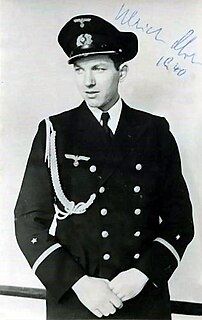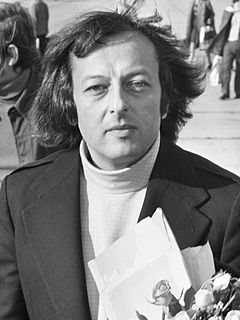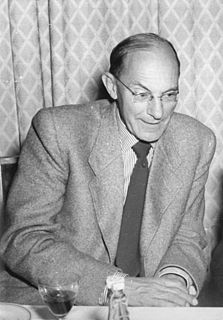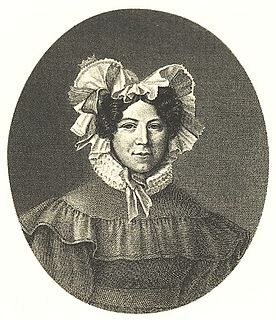 W
WWilhelm Adam was a German general who served in the Bavarian Army, the Reichswehr and the Wehrmacht.
 W
WMarie Catherine Sophie, Comtesse d'Agoult, was a Franco-German romantic author and historian, known also by her pen name, Daniel Stern.
 W
WCarl Heinrich Friedrich Freiherr von Binzer was a German painter and author.
 W
WHilde Domin is the pseudonym of Hilde Palm, a German lyric poet and writer. She was among the most important German-language poets of her time.
 W
WGlückel of Hameln was a Jewish businesswoman and diarist. Written in her native tongue of Yiddish over the course of thirty years, her memoirs were originally intended to be an ethical will for her children and future descendants. Glückel's diaries are the only known pre-modern Yiddish memoirs written by a woman. The Memoirs of Glückel of Hameln provide an intimate portrait of German-Jewish life in the late seventeenth to early eighteenth centuries and have become an important source for historians, philologists, sociologists, literary critics, and linguists.
 W
WGad Granach was the son of German actor Alexander Granach known for his roles in Nosferatu, Ninotchka, and For Whom the Bell Tolls. Gad Granach fled Germany at the age of 21 during the rise of Nazism, immigrating to the then-British Mandate of Palestine in 1936. He published a memoir entitled Where is Home? Stories from the Life of a German-Jewish Émigré recounting of his early life in Berlin and subsequent life in Israel.
 W
WGünter Wilhelm Grass was a German-Kashubian novelist, poet, playwright, illustrator, graphic artist, sculptor, and recipient of the 1999 Nobel Prize in Literature.
 W
WWilhelm Bodewin Johann Gustav Keitel was a German field marshal and war criminal during the Nazi era who served as Chief of the Armed Forces High Command – the office given to the commander and highest-ranking officer of the Nazi Germany Armed Forces during World War II. In this capacity, Keitel signed a number of criminal orders and directives that led to a war of unprecedented brutality and criminality.
 W
WMathilde von Keller (1853-1945), was a German courtier and memoir writer. She served as lady-in-waiting to Empress Augusta Victoria of Schleswig-Holstein from 1881. She was a favorite of Augusta alongside von Brockdorff and Claire von Gersdorff, and they were referred to as "The three Hallelujah Aunts". Her memoirs of her life at court have been published.
 W
WAlbert Kesselring was a German Generalfeldmarschall of the Luftwaffe during World War II who was subsequently convicted of war crimes. In a military career that spanned both world wars, Kesselring became one of Nazi Germany's most highly decorated commanders, being one of only 27 soldiers awarded the Knight's Cross of the Iron Cross with Oak Leaves, Swords and Diamonds.
 W
WAnnette Kolb was the working name of German author and pacifist Anna Mathilde Kolb. She became active in pacifist causes during World War I and this caused her political difficulties from then on. She left Germany in the 1920s and her works were banned during the Third Reich. She wrote novels on high society and in later life wrote nonfiction about musicians. In 1955 she won the Goethe Prize.
 W
WErhard Kroeger or Kröger was a Baltic German SS officer involved in the resettlement of Baltic Germans before World War II. He commanded an Einsatzgruppe in 1941, and was later attached to General Andrey Vlasov and the German sponsored Russian Liberation Army of World War II. He was convicted of war crimes in 1969.
 W
WMarianne von der Leyen (1746–1804), was a German countess regent. She was regent of the County of Hohengeroldseck during the minority of her son Philip Francis, Prince of Leyen from 1775 to 1793. As the age of legal majority was twenty-five, she legally ruled until 1791, but as her son showed no interest to take over the affairs of state, she was able to continue her regency until the invasion and occupation of Revolutionary France in 1793.
 W
WFelix Nikolaus Alexander Georg Graf von Luckner, sometimes called Count Luckner in English, was a German nobleman, naval officer, author, and sailor who earned the epithet Der Seeteufel, and his crew that of Die Piraten des Kaisers, for his exploits in command of the sailing commerce raider SMS Seeadler between 1916 and 1917.
 W
WUlrich Mohr was a German naval officer and the adjutant on the Kriegsmarine auxiliary cruiser Atlantis during the Second World War, where one of his functions was to board captured ships and search for secret papers that might be of use to the German war effort.
 W
WAndré George Previn was a German-American pianist, composer, and conductor. His career had three prongs: Hollywood, jazz, and classical music. On each he achieved success, and the latter two were part of his life until the end. In the movies, he arranged music and composed. In jazz he was a celebrated trio pianist, a piano-accompanist to singers of standards, and pianist-interpreter of songs from the “Great American Songbook.” In classical music he worked as a pianist too but gained television renown as a conductor, and during his last thirty years created his legacy: as a composer of art music.
 W
WIngeborg Rapoport was a German pediatrician who was a prominent figure in East German medicine and, at age 102, the oldest person to receive a Doctorate degree.
 W
WLudwig Renn was a German author. Born a Saxon nobleman, he later became a committed communist and lived in East Berlin.
 W
WHelene Bertha Amalie "Leni" Riefenstahl was a German film director, actress, photographer and Nazi sympathizer.
 W
WEnno Emil von Rintelen was a German general who served in the First and Second World Wars. During the latter, he was the German military attaché in Italy.
 W
WJohanna Schopenhauer was the first German woman to publish books without a pseudonym, an influential literary salon host, and in the 1820s the most famous female author in Germany. In these days, she is known primarily for being the mother of the philosopher Arthur Schopenhauer.
 W
WLorenz Schwietz was Royal Prussian executioner from 21 June 1900 to 29 January 1914. Responsible for carrying out capital punishment in the Prussian provinces, he executed a total of 120 to 123 people, primarily by beheading with an axe, but also with guillotines.
 W
WHilde Sherman (1923-2011) was a German Holocaust survivor and memoirist. During World War II, she was deported to the Riga Ghetto in December 1941 by the Nazis. She later emigrated to Colombia. She published her memoir, Entre luz y tinieblas and Zwischen Tag und Dunkel : Mädchenjahre im Ghetto, in 1982 and 1984. She also spoke to Yad Vashem about her ordeal. She retired in Jerusalem, Israel, where she died in 2011.
 W
WBeata Margareta Kristina Söderbaum was a Swedish-born German film actress, producer, and photographer. She is most known for her roles in Nazi-era films made by a German state-controlled production company.
 W
WUrsula Thiess was a German film actress who had a brief Hollywood career in the 1950s.
 W
WSophie Marie von Voß (1729-1814) was a German lady in waiting and memoirist. She was the influential confidant and Oberhofmeisterin for many decades at the Prussian royal court. Her memoirs have also been published.
 W
WPrincess Wilhelmine of Prussia was a princess of the German Kingdom of Prussia and composer. She was the eldest daughter of Frederick William I of Prussia and Sophia Dorothea of Hanover, and granddaughter of George I of Great Britain. In 1731, she married Frederick, Margrave of Brandenburg-Bayreuth. The baroque buildings and parks built during her reign shape much of the present appearance of the town of Bayreuth, Germany.